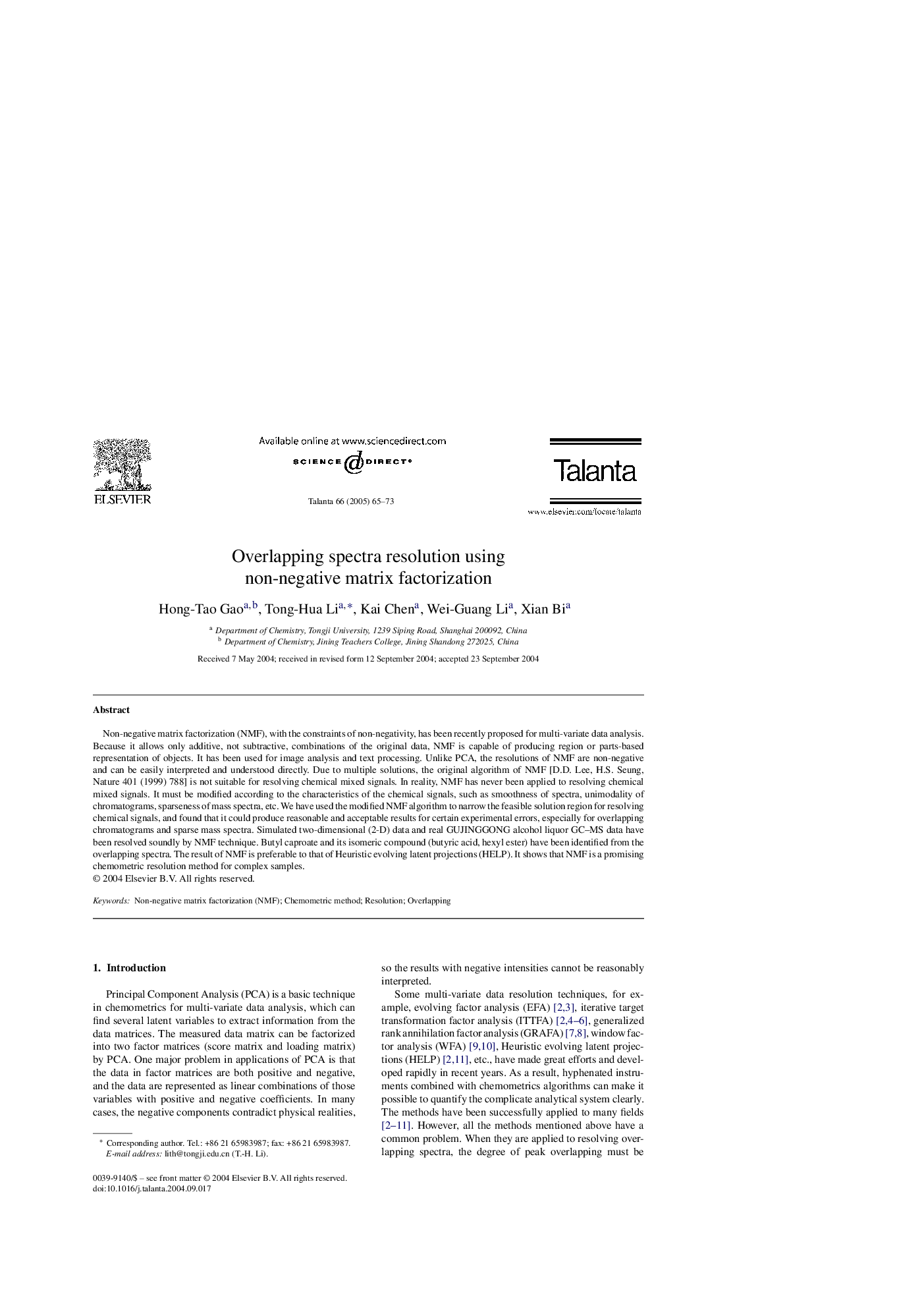| Article ID | Journal | Published Year | Pages | File Type |
|---|---|---|---|---|
| 10562915 | Talanta | 2005 | 9 Pages |
Abstract
Non-negative matrix factorization (NMF), with the constraints of non-negativity, has been recently proposed for multi-variate data analysis. Because it allows only additive, not subtractive, combinations of the original data, NMF is capable of producing region or parts-based representation of objects. It has been used for image analysis and text processing. Unlike PCA, the resolutions of NMF are non-negative and can be easily interpreted and understood directly. Due to multiple solutions, the original algorithm of NMF [D.D. Lee, H.S. Seung, Nature 401 (1999) 788] is not suitable for resolving chemical mixed signals. In reality, NMF has never been applied to resolving chemical mixed signals. It must be modified according to the characteristics of the chemical signals, such as smoothness of spectra, unimodality of chromatograms, sparseness of mass spectra, etc. We have used the modified NMF algorithm to narrow the feasible solution region for resolving chemical signals, and found that it could produce reasonable and acceptable results for certain experimental errors, especially for overlapping chromatograms and sparse mass spectra. Simulated two-dimensional (2-D) data and real GUJINGGONG alcohol liquor GC-MS data have been resolved soundly by NMF technique. Butyl caproate and its isomeric compound (butyric acid, hexyl ester) have been identified from the overlapping spectra. The result of NMF is preferable to that of Heuristic evolving latent projections (HELP). It shows that NMF is a promising chemometric resolution method for complex samples.
Related Topics
Physical Sciences and Engineering
Chemistry
Analytical Chemistry
Authors
Hong-Tao Gao, Tong-Hua Li, Kai Chen, Wei-Guang Li, Xian Bi,
